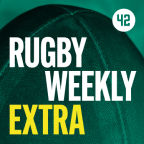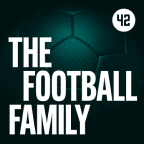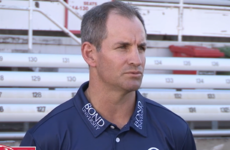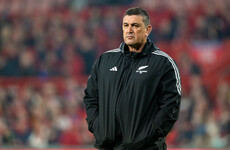SEAMUS O’CONNOR CAN vividly recall the split-second he got it wrong. It was his first World Cup, New Zealand September 2016.
It was a trick he’d performed thousands of times before in training and competition but when you’re 30 feet in the air, the margin for error is practically non-existent. Then again, it’s par for the course. The perils of the sport, the fragility and vulnerability of the lifestyle.
O’Connor came off the half-pipe wall too high, and was helpless in preventing himself from ploughing into the bottom of the structure at high-speed. He knew it was bad, the diagnosis only confirming the severity of the damage; a torn anterior cruciate ligament [ACL], medial collateral ligament [MCL] and meniscus in his knee.
“I completely blew my knee out, it was bad,” the 20-year-old says, looking back on those agonising minutes he lay stricken on the snow. Everything he had known, everything he had done, everything he had dreamed of, was suddenly in jeopardy.
“I didn’t know what was going to happen. If I was going to stop snowboarding altogether, whether it was going to take my life in a different direction. It was really serious.”
The injury was so severe O’Connor was told by doctors he couldn’t travel home for two weeks, and when he was eventually allowed fly he was prescribed blood thinners in fear of a clot.
A month later, O’Connor went under the knife to have his knee fully reconstructed and a long, tedious and painful rehabilitation process began. He was just 18. There was a real danger he would never snowboard again but the mental strain of the layoff weighed heavier, as he felt excluded and isolated from the only world he’d known.
“The negative thoughts started straight away,” he explains. “A lot of times they say a knee injury or blowout is a rite of passage for snow sports athletes. You talk to any professional snowboarder and they’ve had at least one, if not two, surgeries on their knees. It’s very common but at the same time can end your career.
“When I fell, I knew exactly what happened. I could feel my knee wasn’t right and I knew it was going to be a big moment in my career moving forward. It was either career over or a defining moment for me. It just depend on how you deal with it, and how you let it affect you.
“I was obviously very worried but I had a very good surgeon and he did a great job. I got more positive as the healing process went along. I made quick progress but a year is still a long time.”
The concern for O’Connor was not over getting back on a board, or putting the demons of that day behind him, but whether he would ever feel the same again. Would he still be able to perform at the top level again?
“As soon as I got back on a board, it was all still there,” he grins.
“I hadn’t lost anything.”
Exactly 12 months after his last competition, O’Connor completed a remarkable full circle by marking his return at the same World Cup event in New Zealand. The doubts which had reverberated during the relentless days in the gym strengthening his knee had been put to bed. Pyeongchang 2018 was a possibility again.
“I was really worried that I might not be able to compete in these Olympics because of that injury,” O’Connor explains. “I’ve since come back really strong and that’s giving me more motivation.”
After suffering disappointment as a 16-year-old in Sochi four years ago, O’Connor made it his goal to qualify for a second Games and, with more experience, come back and show why he was once one of the sport’s most talked about child prodigies.
“It was huge,” he recalls. “I had been working towards that since I was 10 years old, it was always my dream to go to the Winter Olympics, not to mention representing Ireland.
“Everything came together perfectly and that was a dream come true. When I finished, I didn’t want that feeling to end. I was really seeking that Olympic feeling again but after Sochi, the hype died down and I went back to my normal training routine. Sometimes you ask yourself ‘is this something I want to be doing for the next four years’ and for me that answer was absolutely yes.
“Unfortunately I sustained that injury a little over a year ago but it gave me more motivation to get back and here I am. I have that feeling again.”
The injury setback means O’Connor has dropped the slope-style event to concentrate on his strongest suit, the half-pipe, and he’ll begin his Olympic campaign on Tuesday morning (4am Irish time) in the men’s half-pipe qualifications at the Pheonix Snow Park.
Four years ago, O’Connor — who was born in America but represents Ireland through his paternal grandparents from Drogheda and Dublin — progressed to two semi-finals but a 15th place finish wasn’t enough to book a place in the half-pipe final and he left with unfinished business.
“You have that thought in the back of your mind when you’re riding that danger lurks around the corner but the thrill of it and fun of it and nerves and the adrenaline outweighs the negative thoughts you may have.”
O’Connor has slowly rediscovered his form. He finished 12th in a competition in China before Christmas and then warmed-up for the Olympics with a 15th-place standing in another World Cup event. But to have qualified for Pyeongchang is a remarkable feat in itself. It would have been easy to pull the plug, and accept it wasn’t meant to be.
That wasn’t his fate, however.
From a young age, O’Connor has been a boy wonder on the slopes and such was his prodigious talent, he was signed up by Nike alongside Shaun White, the sport’s superstar, as part of the company’s investment in snow sports. A lot has always been expected of the Irish snowboarder.
Born in San Diego, to an Irish father and Russian mother, O’Connor was first introduced to skiing at the age of just two and his innate talent was honed and nurtured on the slopes of Big Bear Mountain, California.
“My dad runs and operates a brain injury rehabilitation facility so he takes care of individuals who have sustained permanent brain injuries and requires lifelong care and he used to do adaptive ski programmes with them,” he explains.
“We used to go up to a place called Big Bear, which is about three hours from where I was born. From a young age, I was around the snow occasionally so I was skiing at two and did it through the winter. When I was four I asked my dad could I snowboard as I knew it was always something I wanted to do, I always saw snowboarders go up and down. The next winter that’s when I started.
“I was living inside my own bubble at that point, didn’t realise what I was getting myself in for. Within a couple of months, I was away and took to it very quickly.
“I started competing at five and went to my first nationals at six. It didn’t really become obvious to me it was something serious until I was maybe eight. I started doing it more and turned professional at 13.”
And that’s when he became Nike’s poster boy.
“It was at that moment, I felt this is it. It’s a possibility. Three years after I found myself at the Olympics, a dream come true. What more can an athlete ask for?
“Being signed by Nike was definitely a turning point, it was huge. Before that I had sponsors here and there but it wasn’t that serious. Once Nike came into snowboarding I was affiliated with them and things started to take off. Going on trips and photoshoots.
“Hanging out with these people who were idols of mine. I had seen them magazines or on TV and all of a sudden I’m eating dinner with them. That was massive for me, that ignited something within me to keep going.
“But I’ve just been doing what I love since day one. I have a passion for it. Everything else that has come is a bonus. I never thought I’d become professional or I’d go to the Olympics. I never thought this would shape my life.”
But O’Connor has always remained grounded. His parents have placed a huge emphasis on his education through the years and after graduating from High School, he intends to go to University after the Olympics.
For now, however, all the focus is on Pyeongchang and Tuesday morning.
“It’s huge, I can’t describe it,” he adds. “Sochi was the highlight of my career having made it at 16, but my next goal was to become a two-time Olympian. I’ve hit some speed bumps along the way so it’s huge to get here. I can look back with a smile whatever happens.
“I can take it all in and enjoy it, more than last time. Not being overwhelmed as young 16-year-old.
“But overall it’s just a huge honour. To represent Ireland and my family, who have sacrificed so much. I’ve always had close ties with this country and the people here.
“I wouldn’t have it any other way, it’s really special. It means a great deal, and even more so because of what’s happened and where I’ve come from.”
The 42 is on Instagram! Tap the button below on your phone to follow us!















It wrecks my head that Stephen Ireland scored the first goal for Ireland in Croker. I couldn’t think of a player worse than him to score it.
@Ned Flanders: Roy Keane would be a good candidate for you.
18/20, not too bad, definitely guessed a couple.